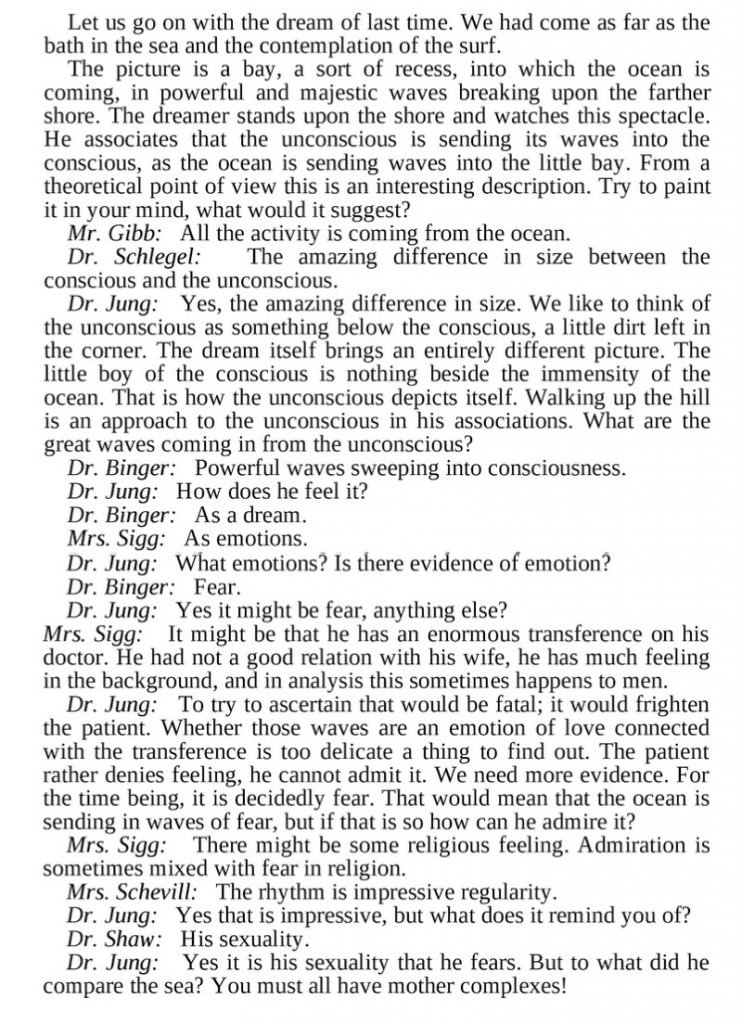Anton Fils and the death of culture
Culture in the West – Fantasia
I pay a visit to the concert hall and look for the ghost of forgotten composer Anton Fils.
Somewhere in the bowels of television programming is a thing called ‘Bargain Hunter’. Two couples get to visit a flea market in which they have to buy several items within a set budget, against the clock. Their purchases are then put up for auction, and the team with the biggest profit wins. It is hard to imagine a more compulsive and seedy analogue of capitalism.1 The couples bicker over which item might be the most profitable, but one of the participants is inevitably drawn to an attractive object that does badly in the auction (or one which they want to keep). The auctioneer, whose ‘expertise’ is sought before the auction, is a smoothly permed corporate spiv2, against whom the unfortunate couples in their baggy fleeces look poor and stupid.
As the auction proceeds, the viewer witnesses the couples run the gauntlet of emotions, from jubilant high-fives and pumping fists at one end, to pale traumatised misery at the other. Out of context, one might imagine that they were either celebrating the end of world poverty, the forgiveness of debt, a substantial universal basic income and the return of the commons; or conversely, grieving for a loved one being sentenced to death or an infant stillborn. The attraction, the erotic bond, between person and object, is crushed in the rush for profit, and it is seen only in the wistful backwards glance, the plaintive appeal to the partner. It is a very clever programme that can be produced for peanuts, and it is further evidence (as if any more were needed) that our culture prefers quantity over quality, profit over pleasure, anxiety over ease, value over worth.
As an antidote to the Bargain Hunters of the world, please listen to the late Thomas Füri conduct Camerata Bern in this utterly sumptuous performance of Anton Fils’ Concerto for Cello in G Major. Thomas Delenga is the soloist.
In these market-centred times, cultural hypocrisy abounds, and Art suffers. At an exhibition of work by Franz West at the Tate Modern some of the sculpture might be touched, sat on, connected with – but getting too close to other pieces would quickly bring barking ‘security’ personnel. A room with lines of pews adorned with off-cuts of carpet offered a flavour of squatting in an abandoned church – surely unconscious irony in one of the world’s foremost temples to the arts, a building that (like all such temples) is dedicated to flattening joy, squashing rebellion and sanitising anarchy.
The West exhibition was not unique. At the Alexander Calder show, also at the Tate Modern, many of the artist’s kinetic works were presented in static form and (of course) nothing could be touched. An imaginative solution might have been to employ art students to create copies – simultaneously benefiting the students, the public, and even the museum’s ancillary business outlets – but instead, the Tate chose to present Calder’s playful pieces as holy artefacts. The same nonsense prevailed at the (ghastly and narcissistic) Antony Gormley exhibition, in which the visitors could ‘play’ in a room full of giant clashing metal hoops but were actively discouraged from touching anything else.
This should be seen as the double bind that it is: the participant is invited to be spontaneous but then is punished for it. At the end of such shows, one is funnelled into a ‘gift’ shop, the shiny things attracting more attention than the objects of the show itself. At last! We can touch something! Take it away! Pay for the art book’s journey to the pulp mill (via the coffee table, bookcase, attic, and charity shop). Looking at the shiny things, it should be easy to understand that culture has been replaced by marketing.
All of our institutions, our politics, what passes for leadership – our very cultural underpinning – all these things stem from the kind of ‘rational’ and ‘logical’ thinking that is known as logos. It is the kind of thought that quantifies and equivocates. All Art is invested, not with worth, but with a cultural value that is determined by ‘experts’, and any disagreement regarding that value is the exclusive province of the same. Artists who wish to break free of the covenant between art and its critics are soon subsumed. True knowledge (the kind of learning that stems from proper humility and years of careful study) is not my target here, but rather the dismissive and monolithic arrogance that passes for expertise. This is not about knowing, but about power, and it functions as another element of marketing. Monolithic expertise ringfences the logos thinking with which the western cultural tradition continues to justify everything from capitalism to colonialism, and it has brought the world to the edge of ruin.
In this piece, I make the case for the type of thinking that comes from eros. The erotic includes the sexual, just as it does everything else in the polyverse, but it is about much more than that: erotic thinking connects rather than separates, it rests rather than works, it is appreciative rather than critical. This is not to say that logos is wrong, it is not. Logos thinking builds our homes, distributes our food, pipes our utilities and keeps the train on the tracks. But it has become hugely inflated. Both Hermes and Aphrodite have been spurned and become diseases.3 The diseased Hermes no longer leads us to depth but runs the algorithms of compulsion behind online shopping. Aphrodite, furious at two millennia of repression, has pornographised everything from cars to holidays. The gods wreak a terrible revenge.
![Musical Instruments | Artist: Evaristo Baschenis [Public domain]](https://www.martinsouthwood.com/wp-content/uploads/2020/07/Baschenis_-_Musical_Instruments.jpg)
There are many paths to eros and here I take that of Classical music in the Western tradition (music written between about 1750 to 1820). It is an interesting choice for two reasons. The first is that in classical music there is a dance between logos and eros: out of a highly formulated mathematical structure emerges vitality and emotional depth. Perhaps the structure of music, the logos, offers the safe boundaries required to release great emotion. For even though composers and musicians in what is described as the ‘common practice period’ were mostly men, in their music they expressed both female and male qualities (Carl Jung would later describe these qualities as Anima and Animus, the primary anthropomorphic archetypes of the unconscious mind). Women were thought to be unsuited to composition because, it was said, their minds were incapable of working with the logical strictures of composition – a perfect example of the restrictive and defensive justification that comes with logos.
The second reason is the way that music responded to the wider social changes of the period, and how it slowly left the employ of the princes both spiritual and temporal and became available to a wider population. That availability has increased massively today thanks to such organisations as IMSLP, Musescore and Musopen, which provide free digitised scores. This democratisation of music that was once the sole property of monarchs, emperors and bishops, is the nearest to the gift economy that most of us will ever see (to keep the gift moving, we also need to gift back so that they can pay for staff and servers). The trigger to this availability was the Enlightenment. By placing emphasis on scientific method, the Enlightenment attacked superstition and intolerance. But by splitting church and state, and by championing principles of personal liberty and reductive empiricism – logos thinking – the Enlightenment sowed the seeds of our present circumstances: the rise of libertarianism and the blanket disavowal of soul. Like any systemic thinking, the Enlightenment led to literalism and moralising, diseases with which we are more than ever afflicted today.
A few words about the technical language of music: this is a language of mathematical shorthand, but to use it would keep us in logos and would be self-defeating. I am happy to admit that this is also convenient for me because I have little technical knowledge myself: my position is that of the enthusiastic amateur. The ever-reliable etymonline.com tells us that ‘Enthusiasm’ comes from the Greek enthousiazein: “be inspired or possessed by a god, be rapt, be in ecstasy,” and that the Puritans used it as a derogatory term to describe ‘excessive religious emotion through the conceit of special revelation from God’. ‘Amateur’, of course, means ‘a lover, one who loves’. So the term ‘enthusiastic amateur’ could carry rather more weight than negative associations with steam railways and watercolourists.
The radical classical – Allegro
In the world of classical music, there is a corresponding attitude to the problem with Fine Art discussed above. Audiences are criticised for only buying tickets for concerts of known music, so the unknown music is not programmed. Since orchestras, like museums, are bound hand and foot by sponsorship and legacy, they are always desperate to fill venues, and even the kind of imaginative programming that sandwiches the unknown between the known has become a considerable risk. Audiences, at least in the provinces, are mostly geriatric. They are capable of a little applause here and there, but only really show any signs of life at the interval, during which they channel the physical abilities of much younger folk in their eagerness to get to the bar. Upon occasion, one hears something so notable, so exquisitely performed, that it demands an immediate ovation – but so inhibited have we become in the modern etiquette of deathly politeness that the chances of this happening are negligible. Such a hush would have been unthinkable in 1786 when the audience at the first night of Mozart’s La Nozze di Figaro encored five numbers, and then seven a week later, leading Emperor Joseph II to issue an edict limiting repeats. The cultural and political significance of theatre in the past is hard for us to imagine. When Covent Garden was rebuilt in 1809, riots broke out over seat prices4.

Beaumarchais’s original play Le Mariage de Figaro fatally damaged European aristocracy. Performances of Mozart’s opera, the political elements of the original play excised, were interrupted by paid hecklers, presumably employed by envious competitors. How good it would be to have even a shadow of this today! Nowadays people can take to the streets for a year before there is any discernible change, and all over the world libertarian regimes are given a popular mandate. In Lean Logic, David Fleming wrote compellingly of the need for reviving Carnival. As a gesture towards this, I would love to see musical festivals touring cities and provinces, taking over a venue for three or four days at a time, during which students would get to play unusual works during the day while the evenings might be reserved for more palatable and profitable fair. Performances could be heard in the main auditoria but spill out into bars and restaurants, to the foyer and the car park. Visitors would have the opportunity to talk to musicians, ask questions, get instruction and join in performances. Such carnivals of music might begin to pick away at the awful creeping reductionism that has crippled the arts and rendered anodyne work that should connect to the soul.
The death of Anton Fils – Adagio
To examine this idea of cultural impoverishment in more detail, let us go back a quarter of a millennium to a cemetery in Germany. It is an icy day in the middle of March 1760, and a body is being buried. The place is Mannheim, on the Rhine. Johann Sebastian Bach has been dead for ten years, George Frideric Handel died in April of the previous year. The venerable baroque composers Telemann and Rameau are still alive. Telemann’s godson, Carl Philip Emmanuel Bach, is working in Berlin for Crown Prince Frederick of Prussia (the future Frederick the Great) and has completed his influential treatise Versuch über die wahre Art das Clavier zu spielen (An Essay on the True Art of Playing Keyboard Instruments). Joseph Haydn, benefiting from his first aristocratic patronage, has just begun to compose symphonies. Leopold Mozart is teaching the four-year-old Wolfgang minuets on the clavichord.
The corpse going into the freezing earth is that of a young musician of 26 who, with his wife Elizabeth, had only just bought a house. His name is Anton Fils5 and he leaves behind him an astonishing body of work, not least of which are 30 concertos for flute and cello, mostly lost, and between 30 and 40 symphonies. Given this productivity why do we not know his name today? Even the name itself is dubious – it might be Antonin, or Johann Anton, or Filtz rather than Fils. Look for his Wikipedia entry and you will find little more, indeed Fils would probably be entirely forgotten were it not for poet and musician Christian Schubart, who wrote in his Deutsche Chronik that Fils had a habit of eating spiders, comparing the taste of them to that of fresh strawberries, and it is assumed that his death was a consequence of this behaviour. This singular information seems to me to be an embellishment: it isn’t difficult to imagine a group of young men, exuberant after work, drinking too much in the local inn, and it’s not a stretch to imagine young Anton grabbing a spider and eating it, or pretending to, out of high spirits. He was also, again according to Schubart, in the habit of using his scores as kindling. Given his productivity this seems quite likely, indeed he would not be the first artist to have destroyed work deemed unsatisfactory. Or maybe he was drunk, or sick from his diet of spiders.

Six years earlier, fresh from studying theology and law at university, young Anton had joined the local orchestra as a humble second cellist. But this was not a band of provincial hacks, but the orchestra of the Mannheim Hofkapelle, probably the finest orchestra of the time, renowned for its excellence of musicianship and innovation of style, described by the English traveller Charles Burney (the Boswell of composers) as ‘an army of generals’. Led by Carl Stamitz, (who also died prematurely in 1757) the orchestra gave its name to such stylistic conceits as the Mannheim Rocket, the Mannheim Sigh, the Mannheim Roller, the Mannheim Birds and the Mannheim Climax (apparently ladies were wont to faint at the roar of one of these crescendos). The orchestra abandoned basso continuo, developed the symphonic form and influenced the sonata form.
Both Haydn and Mozart were critically influenced by Mannheim innovations. Indeed, the whole period of the Enlightenment was one of influence and counter-influence. Tunes, ideas, and harmonies were freely borrowed, adapted, subverted and developed without much fear of accusations of plagiarism. For that reason alone it makes as much sense to call a piece of music ‘Mozartean’ or ‘Haydnesque’, as to accuse C. P. E. Bach of being ‘Bach-like’. A testament to the quality of the Mannheim orchestra came from Mozart, who visited Mannheim in 1777/78, and met the director of the orchestra Christian Cannabich, who had been joint concertmaster at the time of Fils’ death:
I must now tell you about the music here. On Saturday, All-Saints’ day, I attended high mass. The orchestra is very good and numerous. On each side ten or eleven violins, four tenors, two hautboys, two flutes, and two clarionets, two corni, four violoncellos, four bassoons, and four double basses, besides trumpets and kettle-drums. This should give fine music …
https://en.wikipedia.org/wiki/Christian_Cannabich
So how good was Fils’s music? Here is Classics Today, reviewing a recording of some of Fils’ symphonies by Michi Gaigg and L’Orfeo Barockorchester:
The works in question are decidedly the labor of a minor composer, suffused as they are with rudimentary counterpoint, the barest elements of melody, lurching, clumsy dynamics, awkward unconnected phrases, foursquare use of arpeggios and scales, swelling crescendo passages that lead inexorably (and endlessly) to quotidian climaxes, and cadences that seem to start before any thematic development.
https://www.classicstoday.com/review/review-7776/
Not satisfied with this assassination, the anonymous author goes on:
… you struggle to find any true innovation or compositional influence in these works beyond Fils’ partiality to flutes… In short, think bad Haydn, or better, the source for Mozart’s “A Musical Joke”. Evidently, the composer might have thought so as well.
ibid.
I certainly don’t have the technical ability to defend Fils against this onslaught. I would have described my own understanding of counterpoint as rudimentary but that position has, apparently, been taken. By comparison, let’s see what Christian Schubart (he of the spider story) wrote. I quote his excerpt on Fils in full:
Filtz belongs to the older 6 composers of the Mannheim orchestra, but his spirit and his works have long ago made him immortal. I consider him to be the best symphony writer who has ever lived. Pomp, sonority, powerful, all-trembling thunder and rage of the harmonic deluge, newness of ideas and turns of phrase, his matchless pomposo, his surprising andantes, his catchy minuets and trios, and finally his quick, loud, rejoicing prestos… to this hour have not been able to rob him of general admiration. [It is] too bad that this splendid mind, because of his bizarre fancy of eating spiders, withered away prematurely. His pieces today are already seldom performed because he allowed few to be engraved. Most of his compositions were stolen from him, otherwise we would have nothing at all by him. For he thought so modestly of his own works that he made kindling out of many of his most excellent works after they were performed. Generally Filtz possessed a rather special musical and physical character. He had much Britishness in his physiognomy and in his whole psychic state.
Christian Schubart Ideen zu einer Ästhetik der Tonkunst (Ideas Towards an Aesthetic of Music, 1784/85 posthumously published in 1806) English translation by Ted Alan DuBois: http://digitallibrary.usc.edu/cdm/ref/collection/p15799coll3/id/262906
Finale – Presto
Detractors will point out that Schubart wrote, or dictated, his book towards the end of a ten-year prison sentence, and that his ideas may have been more than a little influenced by the severity of his sentence. But – and this is important – Schubart was a poet and a man who lived and spoke his truth even when it landed him in trouble.7 In his appreciation of Anton Fils notice how Schubart’s language is feeling-toned, in sharp contrast to the analytical voice of the anonymous reviewer. I am drawn to Schubart’s warmth and repelled by the reviewer’s hostility.
The point of this piece is partly to celebrate the work of a minor unsung eighteenth-century composer, but it is also an urgent call for us to expand our consciousness of art. Some will argue that there is little point in valuing second-class work when there is so much first-rate work available. A simple answer is that an appreciation of the lesser enhances the enjoyment of the greater, but the complete answer is more complex. The genius of an artist is not an individual thing, an aspirational state, a life-goal: rather it is a blessing. In his book The Gift, Lewis Hyde recounts the story of the Devonshire man who has an inexhaustible barrel of beer, a gift from the fairies. Curious to find the secret to the barrel, the man’s maid takes the cork out of the bunghole and looks inside. The barrel is full of cobwebs, and never again contains beer.
As is the case with any other circulation of gifts, the commerce of art draws each of its participants into a wider self. The creative spirit moves in a body or ego larger than that of any single person. Works of art are drawn from, and their bestowal nourishes, those parts of our being that are not entirely personal, parts that derive from nature from the group and the race, from history and tradition. and from the spiritual world. In the realized gifts of the gifted we may taste that zoë-life which shall not perish even though each of us, and each generation, shall perish.
Hyde, Lewis. The Gift. Canongate 1983 p153
Hyde explains that once we go into analytical thinking, logos thought, the gift is destroyed. For this reason, it is not useful to look too deeply into the source of genius. Genius is angelic. An individual does not own genius, it is rather that genius makes itself known through an individual. To carry genius seems to be a generally difficult thing to do, and is often associated with pain, both emotional and physical. Once the x-rays have revealed the under-painting, once the computers have modelled how to turn anything into Bach, and once the acid of criticism has burned through the technique, then the gift is destroyed. It is highly informative to consider that the undisputed master of counterpoint in the eighteenth century was Johann Georg Albrechtsburger. The path to his door must have been well worn from the feet of his many students. Yet his own work does not inspire (unless one is an enthusiast of the Jew’s Harp. The amazement and laughter that listening to this might provoke should be tempered by an understanding of the special place of the Jew’s Harp in Austrian culture).

There aren’t many recordings of work by Fils available to listen to freely. There is the CD by the aforementioned Barokorchester, but I recommend this recording by Concerto Koln of Fils’ Sinfonia in G minor. The first movement has a wonderful drive, and I particularly like the use of horns towards the end. The andante is rather more ordinary (although I fancy the conducting could be improved). The minuet is inventive and the finale is dramatic and moving.
Thinking with the head one might subscribe to the view of the anonymous reviewer, but thinking with the heart reveals the music of a minor genius. Yes of course Mozart’s Symphony no. 40 in G minor is a far greater work, and most of Fils’ recorded work is unremarkable (though who knows what wonders are gathering dust in libraries). The point is this: it does not diminish great composers if we also appreciate the lesser talents. With eros, you can be curious and engaged. Your open heart can sense things quite differently, you become expansive, and approach the world differently. The rewards are great.
Further listening
I have reservations about this recording, not least the use of a piano rather than a harpsichord for continuo, but the symphony is one of Fils’ best works, the Symphony in A-Major (L’Orfeo Barockorchester, Conductor: Michi Gaigg).
École secondaire Joseph-François-Perrault is a Canadian secondary school with a music programme. Despite lacking experience and maturity, this youthful orchestra delivers an excellent performance of the Symphony in C Major Op2, No 2. Note that this is not the C-Major symphony that is played on the L’Orfeo Barockorchester CD above, and I fear that it has been titled incorrectly.
If you have enjoyed this article, here’s my piece about the much-maligned classical composer and travelling virtuoso extraordinaire. Daniel Steibelt.











